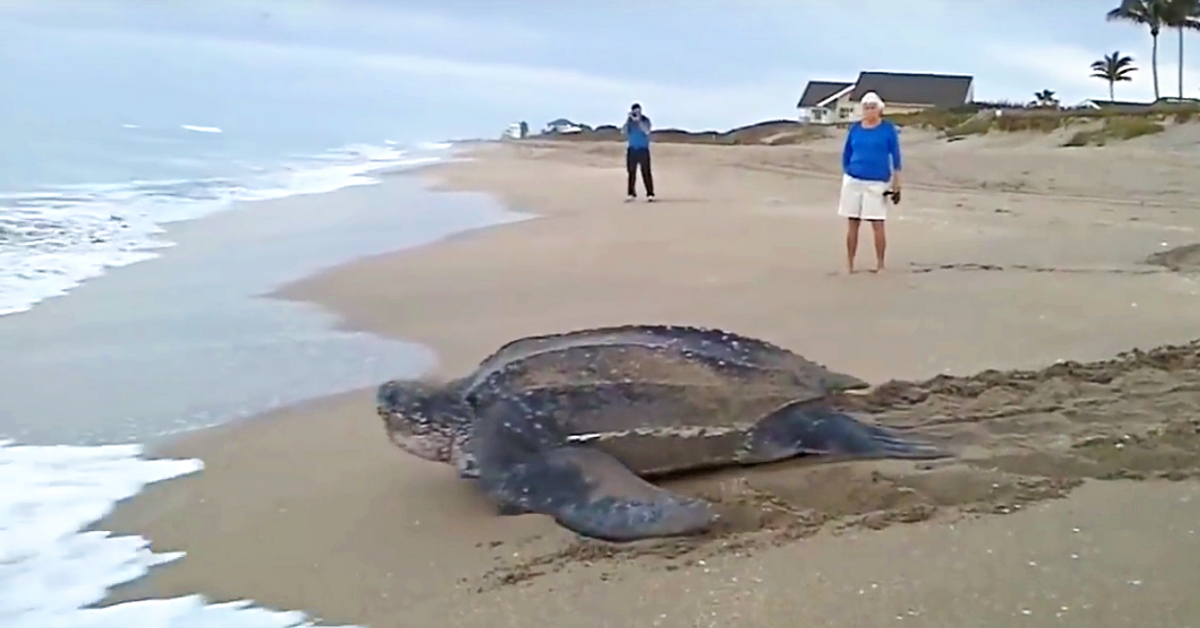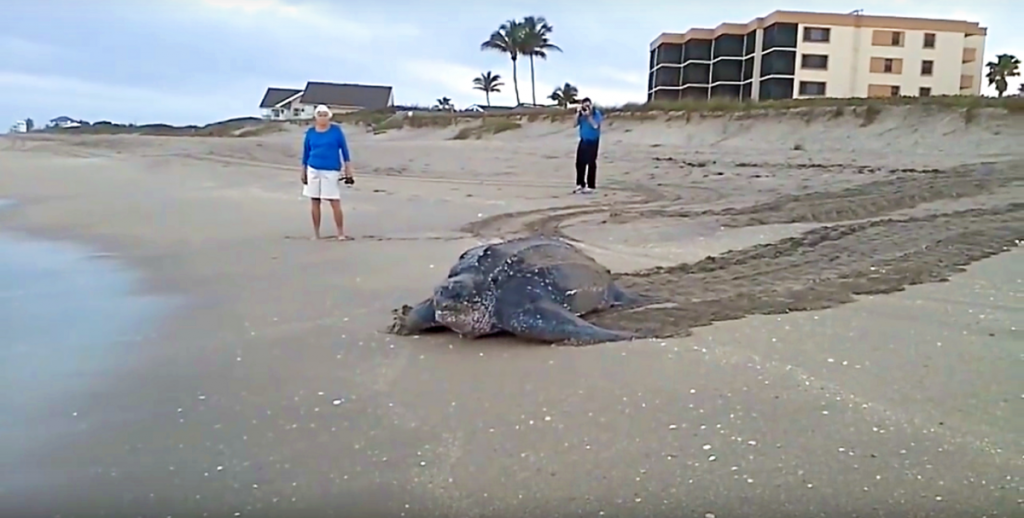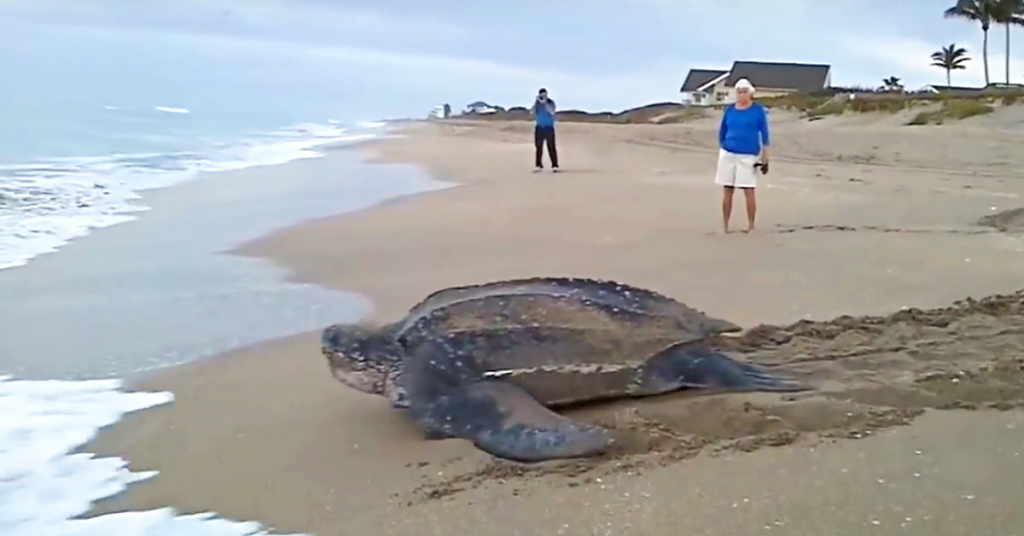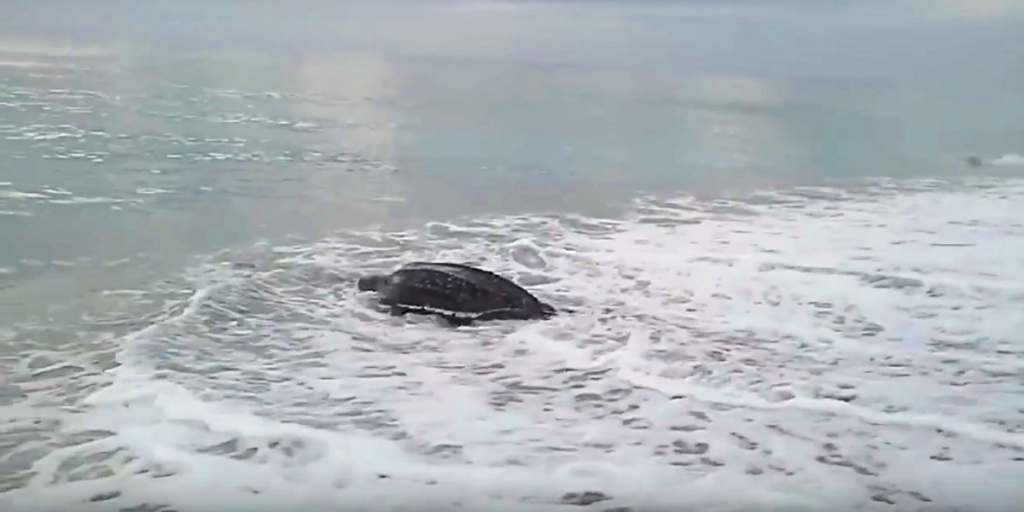The Leatherback Sea Turtle, sometimes referred to as the lute turtle or leathery turtle, is the largest of all living turtles, growing up to seven feet long and weighing up to 2,000 pounds.
Their average life span in the wild is 45 years, but unfortunately they are at a high risk of extinction, according to the IUCN Rest List of Threatened Species.
This turtle differs from other modern sea turtles because it doesn’t have a bony shell, hence their name “Leatherback.” Instead of a shell, they’re covered only by skin and oily flesh, which is rubbery to the touch.
They’re able to dive to depths of 4,200 feet, which is deeper than any other turtle, and can stay down for up to 85 minutes at a time.
While their population is declining, they can be found all over the world. They swim in the waters of the Atlantic, Pacific, and Indian Oceans, as well as the Mediterranean Sea. While some of the waters they reside in may be cold, they are able to maintain warm body temperatures.
Scientists and marine biologists all over the world have been tracking these beautiful creatures and studying them to learn more about their kind and how we can conserve them.
In the video below, you’ll see a massive Leatherback Sea Turtle walking on the beach back into the water as tourists watch in amazement.














